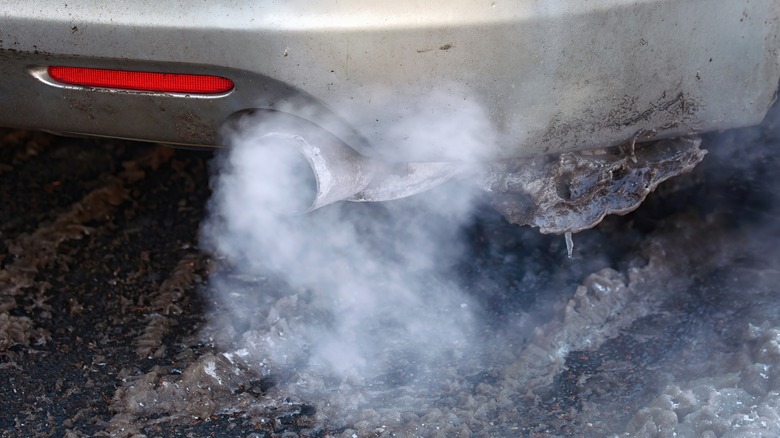We may receive a commission on purchases made from links.

Tetra Images/Getty Images
An engine is a complex assortment of components all working together to generate power. However, without fluids such as coolant and oil, the engine overheats and moving metal parts create friction damage. It’s not enough just to have the proper fluid levels under the hood, they must be warm enough to work properly. For example, cold oil is too thick and can’t lubricate as effectively, causing additional resistance within the cylinders and bearings.
Advertisement
Fortunately, engine block heaters allow you to warm up the engine, particularly the oil and coolant, before you attempt to drive. There are several variations of engine block heaters which plugin using 110-volt power from your home. You can choose options like a warming blanket, have a built-in heating element installed, swap out the normal oil dipstick for a heater, and heating units which attach to the exterior of the engine, among many others.
If you reside in an area which often experiences sub-zero temperatures, you might consider an engine block heater. While you can start your engine and allow it to idle, slowly warming up, many large northern metropolitan cities like Chicago, Boston, and New York have restrictions. Using a heater is just one of many tricks for starting your diesel engine in the cold, which can be even more difficult.
Advertisement
Which engine block heater is right for you?
The answer to this question depends on a few factors such as vehicle compatibility, cost, and the complexity of the installation. For example, a heating pad is easy to install yourself with an adhesive backing that sticks to the outside of the oil pan. You can find heating pads for under $25, which can increase the temperature of the oil to around 194 degrees Fahrenheit after just 15 minutes of being plugged in. Other options, like a freeze plug heater, use a heating element to warm up the coolant and are installed into the engine block. These units can be found for less than $100, but might require help from a professional for installation. It’s essential to identify whether a freeze plug is compatible with your specific vehicle prior to purchase.
Advertisement
Another, more complex option is a circulating unit that must be joined to the coolant lines. This inline circulation heater functions as a pump, moving and warming coolant fluid through the engine. While this option provides significant power in the form of 1,000 or 1,500 watts, it requires experience to install properly and can range in price from around $74 to more than $500. One of the simplest variations of engine block heaters are the dipstick products. For less than $50 you can get a long heater that ends in a plug and slides into the same slot as the dipstick, increasing the temperature of the oil.
But why not just start the engine to warm it up?

Tricky_Shark/Shutterstock
Should you warm up your car before driving in the cold? This is an argument that has been going on for decades, confusing drivers. The reality is that vehicle engines have improved significantly over the years and don’t take as long to warm up to good operating temperatures. Electronic fuel injection in modern engines even adjusts levels in response to cold conditions until warmed up. In fact, some experts now believe prolonged idling is pointless and could cause more harm than good for the engine. But, idling your car doesn’t supplant the need for engine block heaters, as they prepare your car to drive before you turn the ignition key. With the fluids under the hood warm and circulating (in some cases), once you actually do start your car, it’s much easier on the engine.
Advertisement
Another reason to forgo a lengthy idling warm up is that some major cities will fine you. For example, according to Minneapolismn.gov, if you’re caught idling your vehicle for more than three minutes, you are subject to a $200 fine. Per the Department of Energy, «Idling for more than 10 seconds uses more fuel and produces more emissions.» Which poses the question, how long can you sit in a car with the engine running?